#SEO Company
Text

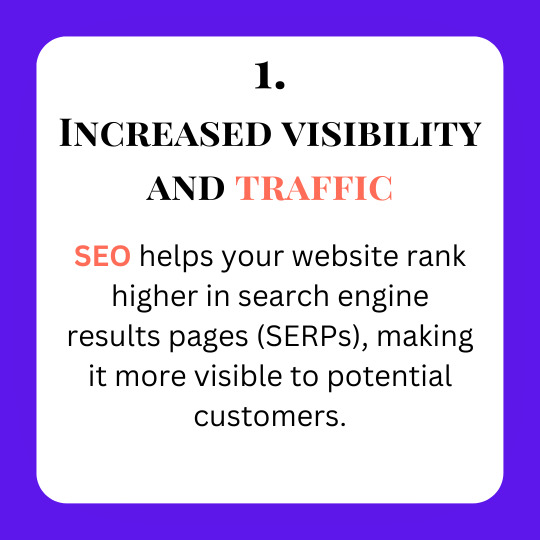
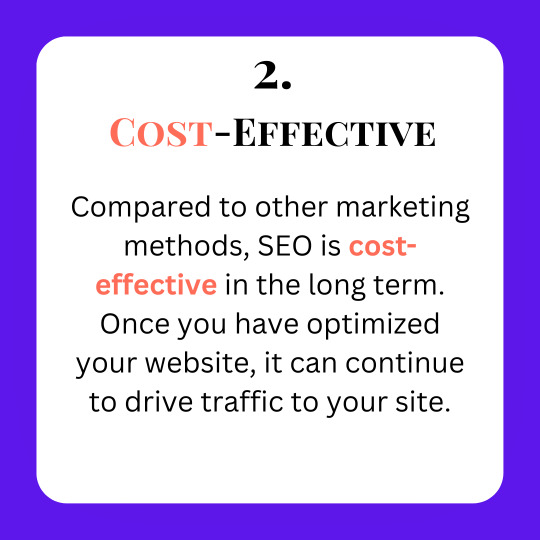
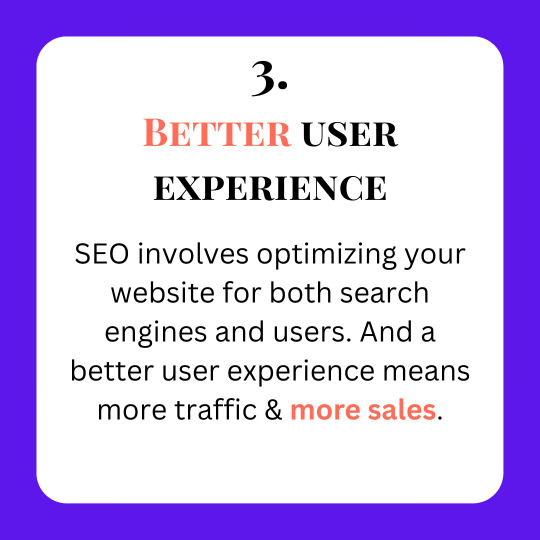


Unveiling 5 Benefits of SEO that will transform your online presence and elevate your business to new heights!
Don't wait, start increasing your search engine visibility today ! Get in touch with us. We'll help you to gain more organic traffic.
#seo expert#seo tips#seo services#seo company#seo marketing#search engine optimisation sydney#search engine optimization#search engine optimisation services#digital marketing#digital marketing agency#online marketing#online business#australia#usa#uk#nz
20 notes
·
View notes
Text
Maximizing Ecommerce Success: A Comprehensive Guide to Key Performance Indicators (KPIs)

Introduction
In the dynamic landscape of online retail, performance metrics are the compass guiding businesses toward success. Key Performance Indicators (KPIs) serve as crucial milestones, directing ecommerce entrepreneurs to navigate the complex realm of sales, marketing, and customer service. In this comprehensive guide, we at RMRKBL Marketing delve into the intricate world of KPIs, offering profound insights to empower your business decisions and drive unparalleled growth.
Unveiling the Essence of Performance Indicators
A performance indicator, a beacon in the data-driven journey, is a quantifiable measurement aligning with specific goals. Picture an online retailer aspiring to boost site traffic by 50% in the next year – a noble ambition. Key indicators could include daily unique visitors, traffic sources (paid advertising, SEO, brand advertising), or the holy grail of customer lifetime value.
Decoding Key Performance Indicators
Amidst a plethora of potential metrics, the crux lies in identifying key performance indicators (KPIs) – impactful data points succinctly reflecting progress toward defined goals. In this pursuit, Shopify's robust reporting and analytics emerge as invaluable tools, boasting over 60 pre-built dashboards to illuminate trends and catalyze informed decision-making.
The Significance of KPIs
Why are KPIs as vital as strategy and goal setting? They transcend mere statistics, offering actionable insights that propel strategic decision-making. Without KPIs, businesses risk navigating uncharted waters, relying on intuition rather than data-driven precision. Harnessing KPIs fosters a deeper understanding of your business and clientele, fostering informed strategies for online sales growth.
Classifying Key Performance Indicators
KPIs, versatile in nature, span qualitative, quantitative, predictive, and historical dimensions, permeating various business operations. In the ecommerce domain, KPIs elegantly align with five core categories: Sales, Marketing, Customer Service, Manufacturing, and Project Management.
Sales: A Symphony of Success
In the realm of sales, mastering KPIs is akin to orchestrating a symphony of success. Ecommerce retailers can fine-tune their performance through vigilant tracking of crucial metrics such as total sales, average order
size, gross profit, average margin, and more. Each metric unveils a facet of your business, from understanding customer behavior through conversion rates and shopping cart abandonment rates to strategic insights on product affinity and competitive pricing.
Unlocking Sales KPIs
1. Total Sales
Ecommerce success hinges on understanding sales patterns. Monitor sales on an hourly, daily, weekly, monthly, quarterly, and yearly basis to discern trends and capitalize on peak periods.
2. Average Order Size
Delve into customer spending habits with the average order size, a pivotal KPI reflecting the typical expenditure per order. This insight informs pricing strategies and product bundling opportunities.
3. Gross Profit
Measure business efficiency by calculating gross profit – the difference between total sales and the cost of goods sold. A nuanced understanding ensures profitability and strategic decision-making.
4. Conversion Rate
Efficiency in converting visitors to customers is paramount. The conversion rate, expressed as a percentage, illuminates the success of your ecommerce site in turning visitors into buyers.
5. Customer Lifetime Value (CLV)
The heartbeat of sustainable growth lies in the customer lifetime value. Nurture long-term relationships by understanding how much a customer contributes over their engagement with your brand.
6. Revenue per Visitor (RPV)
Evaluate the effectiveness of your site in converting visitors into revenue. Low RPV prompts a deep dive into analytics, optimizing the user experience to drive more online sales.
7. Customer Acquisition Cost (CAC)
Strategically invest in customer acquisition by deciphering the cost of acquiring new customers. Analyze marketing spend breakdown to ensure efficient customer acquisition.
8. Inventory Levels
Maintain optimal stock levels by closely monitoring inventory metrics. Insights into stock turnover, product velocity, and sitting stock guide inventory management strategies.
9. Competitive Pricing
Benchmark against competitors by scrutinizing pricing strategies. An agile approach to pricing ensures your business remains competitive and attuned to market dynamics.
10. Product Affinity
Uncover cross-promotion opportunities through product affinity analysis. Identify products frequently purchased together, fueling targeted marketing strategies.
11. Product Relationship
Strategically plan cross-selling tactics by understanding which products are viewed consecutively. Leverage this KPI to enhance product recommendations and elevate user experience.
12. Churn Rate
Customer retention is paramount. The churn rate reveals how swiftly customers are departing. Swift action can mitigate losses and foster sustained loyalty.
13. Cost per Click (CPC)
For paid advertising success, track the cost incurred for each click. Optimize ad campaigns by aligning CPC with conversion rates, ensuring a balanced marketing budget.
Marketing Mastery: Unleashing Potency Through KPIs
Marketing KPIs wield immense power in sculpting the success story of your ecommerce venture. From driving website traffic to deciphering customer behavior, these metrics guide strategic marketing endeavors.
Navigating Marketing KPIs
1. Website Traffic
Website traffic serves as the heartbeat of ecommerce success. Monitor the total number of visits to your site, interpreting trends and refining marketing strategies accordingly.
2. New Visitors vs. Returning Visitors
Distinguish between first-time visitors and returning patrons. This insight aids in assessing the efficacy of digital marketing campaigns and tailoring strategies for diverse audiences.
3. Time on Site
Evaluate user engagement by analyzing the time visitors spend on your website. A deeper engagement with blog content and landing pages signals brand affinity.
4. Bounce Rate
High bounce rates demand attention. Investigate the reasons behind visitors exiting after viewing a single page, optimizing user experience and content relevance.
5. Page Views per Visit
Navigate user journeys by understanding the average number of pages viewed during each visit. Balance engagement with ease of navigation to enhance the user experience.
6. Average Session Duration
Dive into user behavior with the average session duration. Longer durations indicate profound interactions with your site, particularly with blog content and landing pages.
7. Traffic Source
Decipher the origins of website traffic through the traffic source KPI. Channel-specific insights guide focused marketing efforts, whether from organic search, paid ads, or social media.
8. Mobile Site Traffic
Optimize for mobile success by monitoring the influx of users accessing your store via mobile devices. A mobile-friendly site ensures a seamless experience for a diverse audience.
9. Newsletter Subscribers
Harness the potential of email marketing by tracking newsletter subscribers. Analyze demographics to tailor content and maximize reach, ensuring alignment with target audiences.
10. Email Open Rate
Elevate email marketing effectiveness by scrutinizing the percentage of subscribers opening your emails. Test subject lines and maintain list hygiene for optimal engagement.
11. Email Click-Through Rate (CTR)
Drive traffic to your site with a high email click-through rate. This KPI measures the percentage of subscribers clicking on links, a pivotal factor in conversion success.
12. Social Followers and Fans
Measure brand loyalty and awareness through social media metrics. The number of followers and fans on platforms like Facebook, Instagram, and Twitter signifies audience engagement.
13. Return on Ad Spend (ROAS)
Evaluate ad campaign efficacy by gauging the revenue earned for every dollar spent on advertising. ROAS serves as a compass, steering advertising strategies toward profitability.
14. Cost per Click (CPC)
Unveil the cost incurred for each click on paid ads. Efficiently manage marketing budgets by aligning CPC with conversion rates, ensuring optimal returns on investment.
15. Social Media Engagement
Quantify brand engagement with social media followers through the social media engagement KPI. Active interaction signals a vibrant community and potent brand-consumer connections.
16. Clicks
Track the total number of clicks across various platforms – website, social media, email, and ads. A holistic perspective aids in refining content and optimizing engagement strategies.
17. Average Click-Through Rate (CTR)
Measure user engagement with the average click-through rate, revealing the percentage of users clicking on links. Optimize content placement and messaging for heightened effectiveness.
18. Average Position
Ascend the search engine ranks with insights from the average position KPI. Understand your site's SEO and paid search performance, striving for the coveted top position.
19. Pay-Per-Click (PPC) Traffic Volume
Evaluate the success of PPC campaigns by tracking traffic volume. Strategic adjustments based on PPC insights ensure targeted traffic influx to your site.
20. Blog Traffic
Uncover the impact of blog content by isolating blog traffic metrics. Compare blog traffic against overall site traffic for a nuanced understanding of content effectiveness.
21. Number and Quality of Product Reviews
Harness the power of social proof with product reviews. Track quantity and content to leverage customer feedback for SEO, brand credibility, and business refinement.
22. Banner or Display Advertising CTRs
Optimize banner and display ad performance by scrutinizing click-through rates. Insights into copy, imagery, and offer effectiveness guide strategic adjustments for enhanced engagement.
23. Affiliate Performance Rates
Leverage affiliate marketing with insights into performance rates. Identify successful channels, refining strategies to maximize the impact of affiliate partnerships.
Elevating Customer Service through KPI Excellence
Customer service KPIs stand as sentinels, guarding the gateway to customer satisfaction. Scrutinize these metrics to ensure your support teams exceed expectations and cultivate lasting customer relationships.
Pioneering Customer Service KPIs
1. Customer Satisfaction Score (CSAT)
Quantify customer satisfaction through the CSAT metric. Harness customer feedback to refine service strategies and foster a positive brand perception.
2. Net Promoter Score (NPS)
Measure customer loyalty with the Net Promoter Score. Identify brand advocates and detractors, directing efforts toward building a robust community of brand enthusiasts.
3. First Response Time
Efficient customer service hinges on swift responses. Monitor the time taken for the first response to gauge support team efficacy and ensure timely issue resolution.
4. Ticket Resolution Time
Expedite issue resolution by scrutinizing ticket resolution times. Streamline support processes based on these insights to enhance customer satisfaction.
5. Customer Retention Rate
A flourishing business thrives on customer retention. The retention rate KPI illuminates the success of your efforts in cultivating lasting relationships with clients.
6. Customer Complaint Resolution
Transform challenges into opportunities by mastering customer complaint resolution. Evaluate resolution times and customer feedback to fortify your support ecosystem.
7. Service Level Agreement (SLA) Adherence
Set and surpass customer expectations with SLA adherence. Track the percentage of support requests meeting agreed-upon response and resolution times.
8. Customer Effort Score (CES)
Simplify customer interactions with the Customer Effort Score. Minimize friction in customer journeys, fostering seamless and enjoyable experiences.
9. Contact Volume
Analyze contact volume to understand support team workload. Proactive adjustments to staffing and resources ensure consistent service excellence.
10. Customer Service Channel Performance
Decipher the effectiveness of various customer service channels – live chat, email, phone. Optimize resource allocation based on channel performance to maximize customer satisfaction.
11. Agent Performance
Empower support teams through insights into agent performance. Identify top performers and areas for improvement, ensuring a high standard of service across the board.
Conclusion: Mastering the Art of KPIs for Ecommerce Triumph
In the intricate tapestry of ecommerce success, KPIs serve as the warp and weft, weaving a narrative of progress and prosperity. Unleash the potential of your online venture by embracing the nuanced insights offered by sales, marketing, and customer service KPIs. Propel your business forward, navigate challenges, and sculpt a legacy of unparalleled success in the competitive realm of online retail.
FAQs
Why are KPIs crucial for ecommerce success?
KPIs, or Key Performance Indicators, provide quantifiable insights into the performance of various aspects of your ecommerce business. They guide strategic decision-making, enhance customer experiences, and drive overall success by aligning actions with specific goals.
How can I use KPIs to improve my online sales?
Analyzing sales KPIs such as total sales, average order size, conversion rate, and customer lifetime value empowers you to optimize pricing strategies, understand customer behavior, and implement targeted marketing efforts for increased online sales.
What role do marketing KPIs play in ecommerce?
Marketing KPIs, including website traffic, engagement metrics, and return on ad spend, offer actionable insights into the effectiveness of your marketing efforts. These metrics help refine strategies, boost brand awareness, and drive targeted traffic to your ecommerce site.
How do customer service KPIs contribute to business growth?
Customer service KPIs, such as customer satisfaction scores, first response time, and ticket resolution time, play a pivotal role in fostering positive customer relationships. Meeting and exceeding customer expectations leads to increased loyalty, positive word-of-mouth, and sustained business growth.
Can KPIs really help in inventory management?
Absolutely. Sales KPIs related to inventory levels, product affinity, and competitive pricing provide crucial insights into stock turnover, product popularity, and market competitiveness. Effectively managing inventory based on these KPIs ensures optimal stock levels and minimizes wastage.
Are there specific KPIs for evaluating the success of PPC campaigns?
Yes, monitoring KPIs such as pay-per-click (PPC) traffic volume, cost per click (CPC), and return on ad spend (ROAS) provides a comprehensive view of your PPC campaign performance. These metrics help optimize ad budgets, refine targeting, and maximize the impact of your advertising efforts.
Can KPIs help me understand the effectiveness of my social media marketing?
Certainly. Social media KPIs like social followers, engagement metrics, and click-through rates provide insights into the impact of your social media efforts. Understanding these metrics enables you to refine content strategies, build brand loyalty, and expand your social media presence.
How often should I review and update my KPIs?
Regular reviews are crucial to adapt to changing market dynamics. Consider monthly reviews for short-term KPIs and quarterly or annually for long-term goals. Adjust KPIs based on business priorities, industry trends, and the evolving needs of your ecommerce venture.
#digital marketing#e-commerce#localbusiness#marketing#seo#seo agency#seo company#local#seo expert#kpi#kpi metrics
7 notes
·
View notes
Text
Professional SEO Consultant In Toronto

Unlock the full potential of your online presence with Pats Marketing, your reliable SEO consultant in Toronto! Our experienced team provides personalized SEO strategies to boost your website's visibility, attract targeted traffic, and maximize conversions. Trust our expertise to propel your business to new heights in the digital realm.
#SEO consultant Toronto#seo services#seo experts#seo company#toronto seo expert#seo company toronto#seo toronto
23 notes
·
View notes
Text
SEO Goals & Services
In today's fast-paced online environment, achieving SEO excellency is not just about rankings—it's about being the sought-after seo expert that delivers real-world impact. Here are the core aspects of my approach to meeting our shared SEO goals:
Keyword Research & Strategy: Unlocking the potential of targeted keywords that resonate with your audience and align with your business objectives.
On-page SEO: Fine-tuning website elements to speak the language of search engines, enhancing user experience, and improving page performance.
Off-page SEO: Building a robust backlink profile and fostering online relationships that signal trust and authority to search engines.
Content Optimization: Crafting valuable, relevant, and consistent content that not only ranks but engages and converts your ideal customer.
Technical SEO: Identifying and resolving technical issues that impede search engine crawlers and affect website rankings.
Local SEO: Ensuring that local customers find you effortlessly, with accurate business listings and local keyword optimization.
Analytics & Reporting: Making data-driven decisions through comprehensive analysis, tracking progress, and adapting strategies for optimal results.
Continuous Education: Staying ahead of the curve in an evolving landscape with ongoing research and learning the latest SEO trends and algorithm updates.
5 notes
·
View notes
Text

SEO WITH ATTITUDE
Mapiranje ključnih reči je proces povezivanja ključnih reči sa određenim stranicama ili sadržajem na veb sajtu. Ovaj proces je važan za SEO jer pomaže pretraživačima da razumeju o čemu se radi na svakoj stranici i da je rangiraju na relevantnim pretragama.
Ključne reči su reči ili fraze koje ljudi koriste za pretragu informacija na internetu. Kada se osoba zainteresuje za određenu temu, ona će najverovatnije upisati odgovarajuću ključnu reč u pretraživač. Ako je vaš veb sajt optimizovan za te ključne reči, pretraživač će ga prikazati na rezultatima pretrage, što će povećati vidljivost vašeg sajta i privući više posetilaca.
Kako funkcioniše mapiranje ključnih reči?
Mapiranje ključnih reči se obično radi u dva koraka:
Izbor ključnih reči: Prvi korak je identifikacija ključnih reči koje su relevantne za vaš veb sajt. To se može uraditi analizom pretraga, istraživanjem konkurencije ili jednostavnom upotrebom zdravog razuma.
Dodeljivanje ključnih reči: Nakon što ste identifikovali ključne reči, potrebno ih je dodeliti određenim stranicama ili sadržaju na vašem veb sajtu. To se može učiniti na nekoliko načina, kao što su:
Uključivanje ključnih reči u naslove i meta opise stranica: Naslovi i meta opisi su dva najvažnija mesta na stranici za SEO. Uključivanje ključnih reči u ove elemente će pomoći pretraživačima da razumeju o čemu se radi na stranici.
Uključivanje ključnih reči u sadržaj stranica: Ključne reči treba da budu prirodno integrisane u sadržaj stranica. Ne pokušavajte da ih forsirate, jer to može dovesti do loše korisničke iskustva i negativnog uticaja na SEO.
Korišćenje oznaka ključnih reči: Oznake ključnih reči su HTML elementi koji se mogu koristiti za označavanje ključnih reči u sadržaju stranica. Iako su oznake ključnih reči i dalje korisne u nekim slučajevima, one više nisu toliko važne za SEO kao nekada.
Prednosti mapiranja ključnih reči
Mapiranje ključnih reči ima nekoliko prednosti, uključujući:
Poboljšano rangiranje u pretrazi: Kada pretraživači razumeju o čemu se radi na vašim stranicama, oni će ih moći rangirati na relevantnim pretragama.
Povećan saobraćaj na veb sajt: Više rangiranih stranica znači više posetilaca na vašem veb sajtu.
Poboljšano korisničko iskustvo: Ključne reči koje su relevantne za sadržaj stranica pomažu korisnicima da pronađu informacije koje traže.
Kako započeti sa mapiranjem ključnih reči?
Ako želite da započnete sa mapiranjem ključnih reči, evo nekoliko saveta:
Započni sa istraživanjem: Pre nego što počnete da dodeljujete ključne reči, važno je da razumete koje ključne reči su relevantne za vaš veb sajt. To možete učiniti analizom pretraga, istraživanjem konkurencije ili jednostavnom upotrebom zdravog razuma.
Koristite alate za mapiranje ključnih reči: Postoji mnogo alata koji vam mogu pomoći u mapiranju ključnih reči. Ovi alati mogu vam pomoći da identifikujete relevantne ključne reči, da pratite napredak i da generišete predloge za dodeljivanje ključnih reči.
Testirajte i prilagodite: Mapiranje ključnih reči je proces koji se može stalno usavršavati. Testirajte različite kombinacije ključnih reči i pratite rezultate kako biste videli šta najbolje funkcioniše za vaš veb sajt.
#seo#seo expert srbija#seo srbija#optimizacija sajta#dizajn#optimizacijasajta#totaldizajn#seo blog#seo company#SEO STRATEGY 2024#SEO KONSULTANT#RANK BRAIN#predrag petrovic#SEO EXPERT PREDRAG PETROVIC#DIGITAL STRATEGIST EAST EUROPE#Mapiranje ključnih reči#SEO 2024#SEO2025#SEO PREDRAG
9 notes
·
View notes
Text
Keep in mind that SEO is a long-term strategy. It takes time and effort to see results. But if you are patient and consistent, you will see your website ranking higher in search engine results over time.
https://www.linkedin.com/pulse/understanding-how-seo-works-samuel-ekechukwu-zrdsf
#seo#seo marketing#local seo tips#google my business optimization#seo services#seo agency#seo company#voice search seo#SEO trends
12 notes
·
View notes
Text

Struggling to make a bigger impact online?
Let Sparkle and Innovation's Website Development be your solution. We create high-quality, SEO-friendly websites that help you reach your audience.
Visit our site for more info!
https://sparkleandinnovation.com/
12 notes
·
View notes
Text

The company that fired you
#The company that fired you#limbus company#lethal company#seo company#digital marketing company#web development company#company#companies#ausgov#politas#auspol#tasgov#taspol#australia#fuck neoliberals#neoliberal capitalism#anthony albanese#albanese government#toontown corporate clash#lobotomy corporation#corporate greed#corporategifting#corporateevents#fuck corporations#corporations#corporation blog#umbrella corporation#thievery corporation#corporation#karma
5 notes
·
View notes
Text

How many types of SEO are there? - SEO
Types of SEO - In the ever-evolving landscape of digital marketing, Search Engine Optimization (SEO) remains a cornerstone for................
#seo services#seo marketing#seo tools#seo#online marketing#investment#blogging tips#insurance#attorney#trending#seo company#seo expert#seo changbin
17 notes
·
View notes
Text
🟠 Qué es el contenido SEO? 🟠
El contenido SEO se refiere a la creación de contenido en un sitio web de forma que esté optimizado para los motores de búsqueda. Esto implica utilizar palabras clave relevantes, construir una estructura de enlaces internos adecuada y asegurarse de que el contenido sea de alta calidad y relevante para los usuarios.
Ejemplos de contenido SEO incluyen artículos optimizados con palabras clave específicas, meta descripciones y etiquetas alt en imágenes, encabezados con etiquetas H1, H2, H3, enlaces internos y externos relevantes, y una estructura de URL amigable para los motores de búsqueda.

Es importante tener en cuenta que el contenido SEO no se trata solo de incluir palabras clave de forma repetitiva, sino de ofrecer información valiosa y relevante para los usuarios, al mismo tiempo que se optimiza para los motores de búsqueda. Esto ayuda a aumentar la visibilidad del sitio web en los resultados de búsqueda y a mejorar su posicionamiento.
A continuación, se presenta un ejemplo de cómo se puede optimizar el contenido para mejorar el SEO: Título de la página web: "Consejos para mejorar la productividad en el trabajo desde casa"
Contenido optimizado:
Incluir palabras clave relevantes: El uso de palabras clave específicas como "mejorar la productividad en el trabajo desde casa" ayuda a los motores de búsqueda a entender de qué trata el contenido y a mostrarlo en los resultados de búsqueda correspondientes.
Utilizar encabezados y subtítulos: Organizar el contenido con encabezados y subtítulos ayuda a los lectores y a los motores de búsqueda a identificar la información clave en el texto.
Incluir enlaces internos y externos: Enlazar a otro contenido relevante dentro del sitio web (enlaces internos) y a fuentes externas de autoridad (enlaces externos) ayuda a fortalecer la credibilidad del contenido.
Optimizar la meta descripción: La meta descripción es el resumen que aparece en los resultados de búsqueda. Es importante incluir palabras clave y una descripción atractiva para motivar a los usuarios a hacer clic en el enlace.
Utilizar imágenes y videos: Incluir imágenes y videos relevantes en el contenido no solo hace que sea más atractivo para los usuarios, sino que también puede mejorar el SEO al etiquetar las imágenes con palabras clave y proporcionar descripciones alt text.
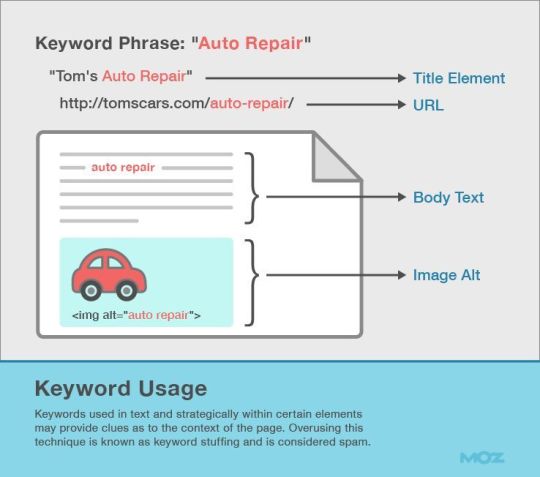
En resumen, el contenido SEO es fundamental para una estrategia de marketing digital exitosa, ya que ayuda a atraer tráfico cualificado a un sitio web y a mejorar su posicionamiento en los motores de búsqueda.
2 notes
·
View notes
Text
SEO Services in Nashik, SEO Company Nashik. Our SEO package includes features such as keyword research and analysis, on-page and off-page SEO
10 notes
·
View notes
Text
Leading Amazon PPC Management Companies.
Are you looking for Amazon PPC management companies in the USA? IndeedSEO has experts to do your work or all your SEO Needs. Click the link below to view our web story!
4 notes
·
View notes
Text
SEO Services Company in Noida
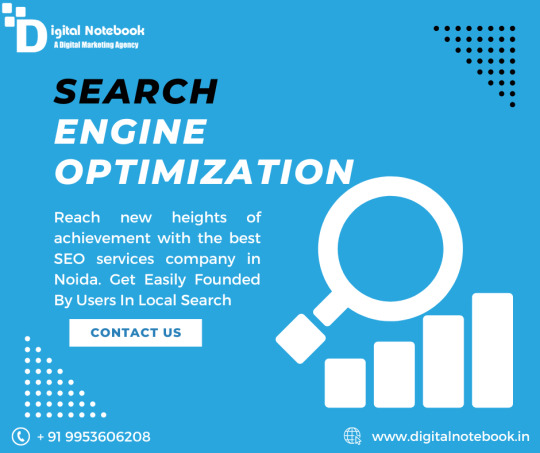
Digital Notebook is the top client-friendly digital marketing agency in India. Our client’s feedback and reviews make us stand out among the rest and shine. We provide the best SEO Services in Noida India. Our experts can help you gain maximum traffic for your brand. We are a focused and result-driven team of experts who are here to enhance the profit of your business.
For more information,
you can visit our website - https://digitalnotebook.in/seo-services-company-in-noida/
2 notes
·
View notes
Text

Running social media involves numerous elements - content, timing, hashtags, targeting, and persona. Let Sparkle and Innovation handle it for you!
Visit our website for more info: https://sparkleandinnovation.com/
11 notes
·
View notes